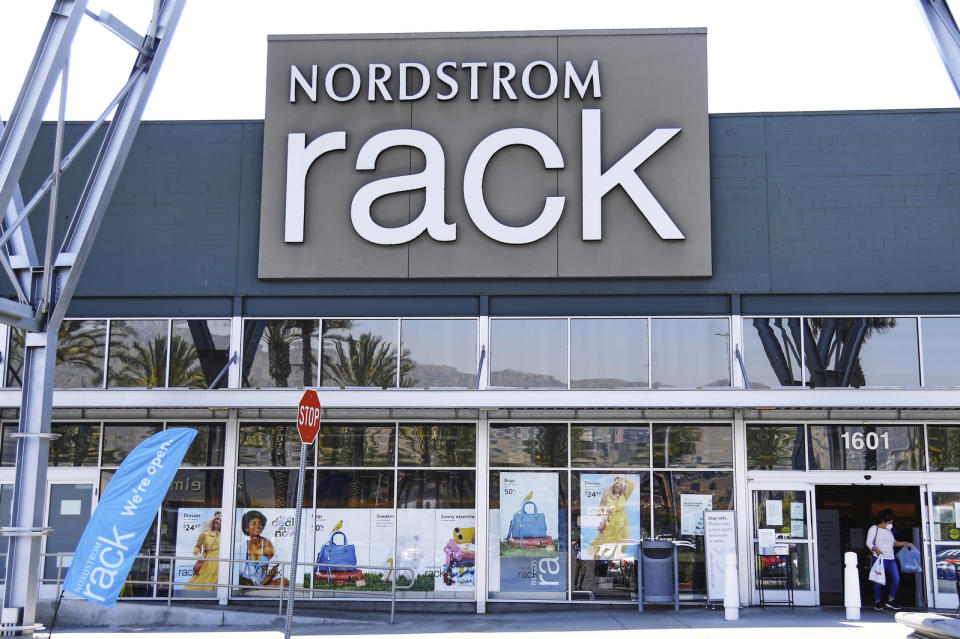Nordstrom Cites Progress in Q2 But Lowers 2022 Forecast

Nordstrom Inc. reported solid second-quarter earnings and sales, citing a calendar switch in the Anniversary Sale and momentum from strategic initiatives.
However, executives also cited decelerating consumer demand beginning in late June, leading the company to revise its 2022 forecast downward. Still, the report seemed more upbeat than those from Target, Kohl’s and Macy’s, where inventory gluts and revised downward forecasts for 2022 overall were disclosed.
More from WWD
Brooklyn Museum Celebrates Virgil Abloh: Figures of Speech Opening
17 Exclusive Products from Nordstrom's New York City Flagship
Nordstrom is seeing the benefit of operating upscale department stores catering to higher-income customers, who haven’t been feeling the impact of inflation as much as lower-income consumers and offering a relatively high proportion of more fashionable merchandise suitable for wear-to-work, special occasions and going out, which Americans have been gravitating toward this year. It’s been coming at the expense of declining discretionary spending in casual, active and home areas as of late.
In addition, Nordstrom’s Anniversary Sale, which offers early access to new fall merchandise at a discount for a limited time, and was this year timed almost entirely in the second quarter, is a unique competitive advantage. The company also has more room to grow since its declines during the heart of the pandemic were larger than most of its competitors.
Net earnings for the quarter ended July 30 came to $126 million, or earnings per diluted share of $0.77, versus $80 million, or $0.49 per diluted share, in the year-ago period.
Earnings before interest and tax were $202 million, compared with $151 million during the same period in fiscal 2021, primarily due to higher sales, partially offset by higher markdowns and higher labor expenses. Adjusted EBIT of $210 million for the second quarter of 2022 excluded costs associated with the wind-down of Trunk Club.
Net sales in the second quarter reached $3.99 billion, a 12 percent increase from $3.57 billion in the year-ago period.
“We delivered solid results in the second quarter, with top-line growth, increased profitability and continued progress in our strategic initiatives,” Erik Nordstrom, chief executive officer of Nordstrom Inc., said in a statement. “While our quarterly results were consistent with our previous outlook, customer traffic and demand decelerated significantly beginning in late June, predominantly at Nordstrom Rack. We are adjusting our plans and taking action to navigate this dynamic in the short term, including aligning inventory and expenses to recent trends, and we remain confident in our ability to deliver on our long-term strategic and financial goals.”

During a conference call with industry analysts, the CEO, along with Pete Nordstrom, president and chief brand officer, and Anne Bramman, the chief financial officer, indicated some key trends happening, among them:
Softness in demand for clearance product.
Customers not trading down and wanting newness.
A deceleration of sales starting in late June and most evident at Rack in its lowest-priced merchandise.
Softness in sales of private label, where there is new leadership and work underway to revamp the program.
Strong sell-through on higher-priced items, with double-digit growth in designer but some deceleration seen there.
They also cited reducing inventory levels, and expectations of exiting the year in a “clean inventory position.”
Other areas highlighted were capital investments, primarily in supply chain and technology capabilities, and priorities in reducing leverage and returning cash to shareholders, and taking a “measured” approach to share repurchases.
The company is also working to advance its digital capabilities, and has been scaling its styling program by offering more looks, virtual style boards and online styling appointments.
Another important initiative is at Rack, where the merchandise is being repositioned to increase the supply of premium brands and the marketing is being focused more on growing awareness of the off-price brand. Ninety percent of the top brands sold at the full-line Nordstrom department stores are sold at Rack, and last quarter, sales of the top 100 brands at Rack increased 17 percent. The strategy involves shifting away from lower price points items that have not resonated with customers.
Rack has been expanding its next-day order capabilities and has been seeing strong early results in its beauty expansion.

Michael Buckner/PMC
Apparently, investors weren’t thrilled with what they heard from Nordstrom. The company’s shares were up 1 percent, or $0.23 to $23.20, at the close of the market, but in after-hours trading plunged 13.6 percent, or $3.15, to $20.05.
In a recap of category performance during the second quarter, executives said that men’s apparel had the strongest growth versus 2021, and shoes, women’s apparel and beauty also had double-digit growth, as customers updated their wardrobes and returned to occasions. At the Anniversary event, sales increased 5 percent.
The timing shift of the Anniversary Sale, with one day falling into the third quarter of 2022 versus roughly one week in 2021, had a positive impact on net sales of approximately 200 basis points compared with the second quarter of 2021.
“We elevated the customer experience and increased engagement during this year’s Anniversary Sale, and we’re proud of our team’s execution and dedication to customers,” said Pete Nordstrom. “As we look to the second half of the year, we are aggressively right-sizing our inventory while investing in supply chain and merchandising capabilities that will benefit us in 2023 and beyond.”
In its revised outlook Nordstrom is now projecting 5 to 7 percent revenue growth for 2022. Previously, the Seattle-based company projected 6 to 8 percent growth.
Earnings per share, excluding the impact of any share repurchase activity, are projected at $2.30 to $2.60, versus the previous forecast of $3.38 to $3.68 a share.
Adjusted EPS, excluding share repurchases, is seen at $2.30 to $2.60 versus the earlier projection for $3.20 to $3.50 per share.
For the Nordstrom banner, net sales increased 14.7 percent, improving sequentially from the first quarter versus pre-pandemic sales levels.
At Nordstrom Rack, net sales increased 6.3 percent compared with the same period in fiscal 2021, improving sequentially from the first quarter versus pre-pandemic sales levels.
Digital sales increased 6.3 percent compared with the same period in fiscal 2021. The timing shift of the Anniversary Sale had a positive impact on company digital sales of approximately 400 basis points compared with the second quarter of 2021. Digital sales represented 38 percent of total sales during the quarter.
“The uncertainty is significant,” said Erik Nordstrom during the conference call with analysts. “You can make the case that things can get better quickly, or a credible case that it’s going to be tough.
“The first thing we need to do is to bring inventory levels down,” he said. “They’re not super high right now. But we need to get our inventories down to where we can be really responsive no matter where it (consumer demand) goes, how it plays out for the rest of the year. We really must address the less productive parts of our inventory and clean it up so we can be flexible and agile to whatever the customer demands are.
“We put customers at the center of everything we do,” said Nordstrom, echoing a familiar company theme. “We have a strong balance sheet. We are well positioned to capture pockets of demand.”
Sign up for WWD's Newsletter. For the latest news, follow us on Twitter, Facebook, and Instagram.

